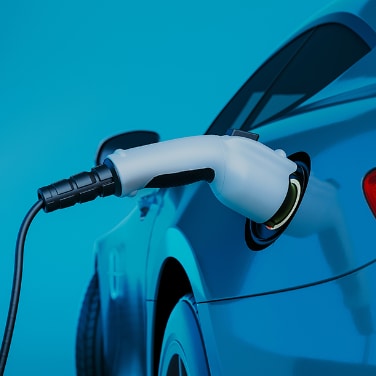Lithium-Ion Battery Recycling to Play a Key Role in Reducing Greenhouse Gas Emissions
By Mark Miller.
Even for people fully aware of the growing threat greenhouse gases pose to the environment, the recent numbers are eye-opening: The transportation sector alone produced about 7.3 billion metric tons of CO2 emissions worldwide in 2020. Passenger cars were the largest source, accounting for 41 percent.1It was startling statistics like these that drove an alliance of governments, auto manufacturers, financial institutions, and others during the 2021 United Nations Climate Change Conference (COP26) to establish a goal of selling 100 percent zero-emission cars and vans by 2040. In a separate agreement, 15 countries also expressed their intention to transition to sales of 100 percent zero-emission trucks and buses by 2040.
These types of agreements signal a growing wave of electric vehicles (EVs) coming to market, along with corresponding demand for the lithium-ion (Li-ion) batteries that power them. But will there be enough metals — lithium, cobalt, nickel, and others — to produce the needed Li-ion cells? Materials scientists are working on recycling technologies to help keep pace with demand.
ReCell Ramps Up
The U.S. Department of Energy (DOE) responded to the need for Li-ion battery recycling in 2019 and launched the ReCell Center for research and development. Located at Argonne National Laboratory, ReCell collaborates with other labs, universities, manufacturers, and participants in the Li-ion battery supply chain. One of its goals is to develop a cost-efficient recycling process to recover high-value materials for sale back to manufacturers.
"This center will create jobs and create a national supply of lithium-based battery materials, as well as spur the adoption of an affordable electric vehicle economy. "
– Daniel R. Simmons, Assistant Secretary, Office of Energy Efficiency and Renewable Energy, U.S. Department of Energy.
Cost-efficient techniques are important because they provide Li-ion recycling projects with economic viability and sustainability. In fact, ReCell aims to help grow an entire battery recycling industry through economic and environmentally sound recycling processes.
“This center will create jobs and create a national supply of lithium-based battery materials, as well as spur the adoption of an affordable electric vehicle economy,” said Daniel R. Simmons, assistant secretary of the DOE’s Office of Energy Efficiency and Renewable Energy, in the Design News article, “Volkswagen, DOE Want EV Battery Recycling for Fun and Profit.”
Makers’ Marks
Auto and battery manufacturers are setting more ambitious sustainability targets, too. Volkswagen has opened a battery recycling plant at its factory in Salzgitter, Germany. “For 10 years now, we have been researching how we can recuperate raw materials. These include, above all, cobalt, lithium, manganese, and nickel,” explained Thomas Tiedje, head of technical planning at VW, in the same Design News report.
EV innovator Tesla claims it has a process that can save up to 92 percent of the elements that go into a battery pack, according to the article, “New Tesla Battery Recycling Process Reportedly Produces No Waste,” in InsideEVs. And a spokesperson from a subsidiary of China’s biggest maker of Li-ion cells says it can recycle 120,000 metric tons of batteries per year — enough for more than 200,000 cars, reports Davide Castelvecchi in his article, "Electric cars and batteries: how will the world produce enough?" in Nature.
Timing Is Everything
These efforts may be coming just as they’re needed. EV sales more than doubled in 2021 to reach 6.6 million. That’s nearly 9 percent of the global car market and more than triple their market share from just two years earlier.2 To meet the zero-emissions goals of agreements like those announced at COP26, Li-ion battery recycling needs to mature with the burgeoning EV market.
This level of growth requires a re-evaluation of Li-ion battery metal sources. According to Castelvecchi’s report, there may be enough lithium to support the transition to EVs up to 2050. Cobalt, however, could face shortages due to the conditions in which it is mined and other factors. Nickel shortages may also arise. These constraints — along with the demand for Li-ion power from a range of devices and emerging energy storage systems (ESSs) — could make Li-ion battery recycling a critical capability for achieving a zero-emissions future.
Mark Miller is a Thermo Fisher Scientific content copywriter.
References
1. Tiseo, I. (2021, December 14). Breakdown of CO2 Emissions in the Transportation Sector Worldwide 2020, by Subsector. Statista. https://www.statista.com/statistics/1185535/transport-carbon-dioxide-emissions-breakdown/
2. Paoli, L. & Gül, T. (2022, January 30). Electric Cars Fend Off Supply Challenges to More Than Double Global Sales. International Energy Agency. https://www.iea.org/commentaries/electric-cars-fend-off-supply-challenges-to-more-than-double-global-sales
